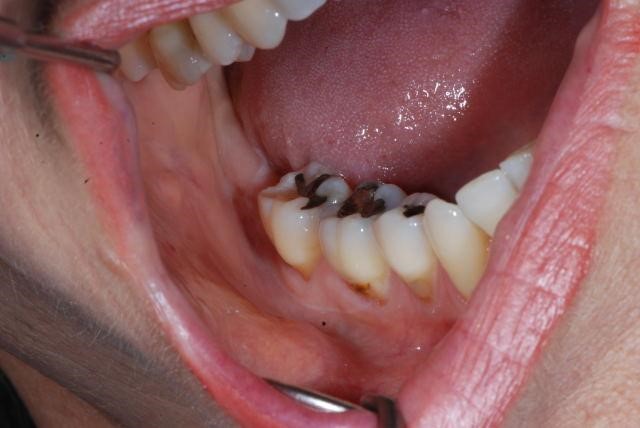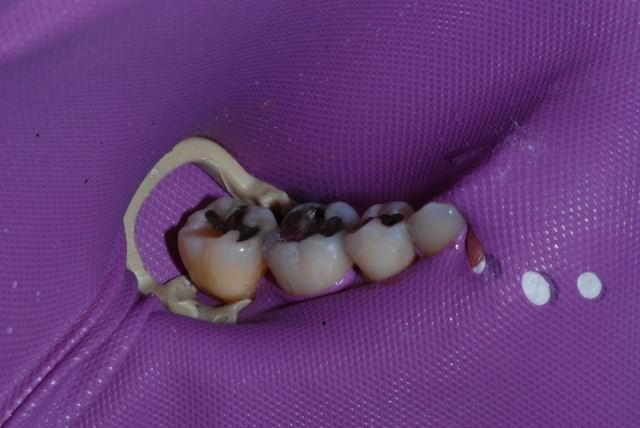What can be done about dental anxiety
If you are anxious, scared or even terrified of dental treatment, you are not alone. It is a big club.
There are a number of treatment options available depending on the level of anxiety you experience when visiting the dentist. Just let us know before your appointment and we’re more than happy to help – we see some levels dental anxiety each day.
If you are a very anxious patient, intravenous sedation has the advantage of you being totally relaxed, all of the treatment can be done in one appointment and you often have no memory of the appointment.
There are lots of things we do that help including:
- Calm, supportive team
- Use of local anaesthetics
- Television/ videos in the ceiling above you with cordless headphones
- Nitrous oxide (sometimes called “laughing gas”) which is a gentle way of relaxing you in conjunction with local anaesthetics.
- The use of rubber dam (See Rubber Dam) and its importance in calming people is a big help ensuring that you don’t have water etc. falling down the back of your throat and allows you to relax. With rubber dam and local anaesthetics many people have been known to fall asleep.
- It has been a long time since you last visit
- Have you been putting it off because you’re anxious?
- You had a traumatic experience when you were young
Local anaesthetic
We use numbing topical anaesthetic ointment, local anaesthetic solutions that are warmed up to body temperature (so their application is more comfortable) to help reduce any pain and encourage you to relax. We can also use shorter acting anaesthetics so it doesn’t affect other areas of your life such as travel or getting to sleep, for example.
Nitrous Oxide (Happy gas)
Nitrous oxide (sometimes called “laughing/happy gas”) is a gentle way of relaxing you in conjunction with local anaesthetics.
It is available in each of our treatment rooms and used for it’s anaesthetic and analgesic effect i.e. relieving pain and anxiety
It is safe and has no after effects. It helps you relax throughout the treatment. Effects of Nitrous Oxide will cease after a few deep breaths of fresh air. The gas will totally exit the system within 12-24 hours making it a safe treatment option for patients of all ages.
Sedation Dentistry
IF YOU ARE REALLY ANXIOUS intravenous sedation, sometimes called “sleep dentistry” has the advantage of you being totally relaxed, all of the treatment can be done in one appointment and you often have no memory of the appointment
The Wonders of Rubber Dam
It’s hard to believe that a sheet of rubber can make you feel more comfortable about dental treatment and allow us to do better dentistry but rubber dam can.
Rubber dam is a thin sheet of rubber that is placed over your teeth. The teeth we are working on protrude through. It stops things falling down your throat so that you don’t swallow or inhale any debris from old fillings. It protects your lips, cheeks and tongue. The first minute of putting it on is awkward but as soon as we start working on the tooth the advantages are immediately apparent to patient and staff alike.
Tooth coloured fillings rely on being bonded to clean dry tooth structure and rubber dam is recommended by all manufacturers of tooth coloured material.
We use rubber dam routinely on all dental fillings. Unless the tooth is too short to hold the dam or if there is not enough tooth left.
We would rate it as one of the most useful and necessary tools we have in dentistry along with local anaesthetics.
Why Use It?
There are many good reasons for using Rubber Dam:
- Very high patient acceptance because it allows them to relax. Like so many things in dentistry if we are enthusiastic about its benefits this will translate to our patients. 95% of who react positively to its use. Even if we have effective local anaesthetic our patients still have to contend with things falling down the back of their throats, which is enough to make any one anxious. Rubber dam allows patients to truly relax and many fall asleep in my chair.
- Protection of the patient’s airway from debris associated with removing old restorations so they don’t swallow or inhale amalgam/mercury etc.
- Protection of patient’s soft tissue – keeping the tongue, lips and cheeks out of the way during the procedure
- Infection control – placing a high speed drill/handpiece in someone’s mouth creates an aerosol spray with the patient’s saliva increasing the risk to dentist and assistant alike.
- Isolation of the operating field – the essential requirement for the successful use of a bonding system and placement is a clean dry field. Chairside assistants find it much easier to keep patients comfortable
- Huge time saver because patient doesn’t need to sit up and rinse. One doesn’t have to waste time with cotton rolls, saliva ejectors, keeping tongue and cheeks protected and out of the way. Also not the constant need for suction
- Improved access and visibility – much easier for dentist and assistant to see the area they are working on
Using a dental rubber dam to isolate the affected tooth or teeth from the rest of the mouth which helps protect your airway and also all the soft tissue in your mouth.
The Rubber dam is comfortable and means you can relax your mouth while we conduct the work.
Commonly Asked Questions
- Oral sedation or local anaesthetic (LA) – we can numb the area requiring treatment for your comfort
- Inhalation sedation – commonly known as “laughing gas”, “happy gas” or nitrous oxide
- Intravenous (IV) sedation – commonly known as sleep dentistry
- General anaesthetic (GA) – dental work can be conducted under GA, however this is not done on the premises.
Oral sedation is a combination of anti-anxiety and pain-relieving medication in tablet or liquid form. This is administered by a dental practitioner.
Taking “happy gas” involves inhalation of nitrous oxide and is ideal if you are slightly nervous and would benefit from a pleasant, relaxed feeling. Again this is administered by the dentist.
IV sedation or sleep dentistry is anti-anxiety medication administered intravenously to induce a state of deep relaxation. This medication is delivered by an anaesthetist at our dental surgery.
General anaesthetic. This is delivered by an anaesthetist off-site as it requires an “in-theatre” recovery (Randwick Day Care Centre).
The above options are listed in order of least invasive to most invasive forms of sedation dentistry. Your individual circumstances would determine the best sedation option for your treatment. One of the increasingly popular sedation options is IV sedation – or sleep dentistry.
Sleep dentistry is designed so anxious patients can receive treatment without being acutely aware of the specifics of the procedure. IV sedation offers a middle ground for those patients who wish to be more sedated than the two less-invasive techniques. The advantage of IV sedation over a general anaesthetic (GA) is that it can be delivered at our own practice rooms without the need to go into theatre. Patients often are amazed at how comfortable the whole procedure is.
Yes. Sleep dentistry is a specialised, highly effective treatment that safely creates optimal comfort for patients.
IV sedation must be administered and supervised by a qualified and experienced anaesthetist (see “About Us” Dr Bree Belford) or specially trained dentist.
Which form of sedation is covered by Medicare?
IV sedation or sleep dentistry is covered by Medicare and patients will normally receive around 25% back from the total IV sedation fee (though this may vary).
Oral sedation and “happy gas” alternatives are not covered by Medicare, but may be covered by health funds.
Sleep dentistry is a great option when your anxiety or fear of having dental procedures is preventing you from having dental treatment that can be vital to your health.
Overall, sleep dentistry is recommended for anxious patients or those that fear getting any treatment done at all. It can also benefit those who are short on time and want to get as much work completed as quickly as possible in the one visit.
No procedure is too small for this process. If you are too anxious to even have a dental clean, then sedation can definitely help you. The most common procedures performed under dental sedation are:
- Tooth extractions
- Crown preparations
- Dental implants
Sleep dentistry is fast becoming an increasingly popular choice for dental patients across a range of procedures.
If you would like to book an appointment or like to know more call us 02 8294 7128 to speak with one of our dentists or make an online enquiry.
Read more about oral health therapists and dental treatment for children at SHDC.
Contact Us
Schedule Your Next Appointment or Send Us An Enquiry


